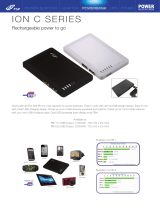
4.5 Other Hardware..................................................................................................................................40
4.5.1 Clock Doubler ............................................................................................................................40
4.5.2 Spectrum Spreader......................................................................................................................40
4.6 Memory..............................................................................................................................................41
4.6.1 SRAM......................................................................................................................................... 41
4.6.2 Flash EPROM.............................................................................................................................41
Chapter 5. Software Reference 42
5.1 More About Dynamic C.....................................................................................................................42
5.2 Dynamic C Function Calls................................................................................................................44
5.2.1 Digital I/O...................................................................................................................................44
5.2.2 Serial Communication Drivers...................................................................................................44
5.2.3 User Block..................................................................................................................................44
5.2.4 SRAM Use..................................................................................................................................45
5.2.5 RCM4510W Cloning..................................................................................................................45
5.2.5.1 Including Firmware Update in Cloned Application .......................................................... 46
5.2.6 ZigBee Drivers ...........................................................................................................................46
5.2.7 Prototyping Board Function Calls..............................................................................................47
5.2.7.1 Board Initialization............................................................................................................ 47
5.2.7.2 Alerts.................................................................................................................................. 48
5.2.8 Auxiliary I/O Pins Function Calls..............................................................................................49
5.2.8.1 Digital I/O.......................................................................................................................... 51
5.2.8.2 Analog Inputs..................................................................................................................... 52
5.3 Upgrading Dynamic C .......................................................................................................................53
5.3.1 Add-On Modules........................................................................................................................53
Chapter 6. Using the ZigBee Features 54
6.1 Introduction to the ZigBee Protocol................................................................................................... 54
6.1.1 ZNet vs. ZB Firmware................................................................................................................55
6.2 ZigBee Sample Programs...................................................................................................................56
6.2.1 Setting Up the Digi XBee USB Coordinator..............................................................................56
6.2.2 Setting up Sample Programs ......................................................................................................58
6.3 Using the Sleep Mode........................................................................................................................ 62
6.4 Dynamic C Function Calls.................................................................................................................64
6.5 Where Do I Go From Here?...............................................................................................................64
Appendix A. RCM4510W Specifications 65
A.1 Electrical and Mechanical Characteristics ........................................................................................ 66
A.1.1 XBee RF Module.......................................................................................................................70
A.1.2 Headers......................................................................................................................................71
A.2 Rabbit 4000 DC Characteristics........................................................................................................ 72
A.3 I/O Buffer Sourcing and Sinking Limit.............................................................................................73
A.4 Bus Loading ......................................................................................................................................73
A.5 Conformal Coating............................................................................................................................76
A.6 Jumper Configurations ......................................................................................................................77
Appendix B. Prototyping Board 79
B.1 Introduction .......................................................................................................................................80
B.1.1 Prototyping Board Features.......................................................................................................81
B.2 Mechanical Dimensions and Layout .................................................................................................83
B.3 Power Supply.....................................................................................................................................84
B.4 Using the Prototyping Board.............................................................................................................85





















